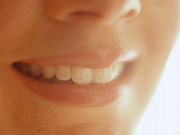Monophasic filler has lower elasticity, higher viscosity than biphasic filler
WEDNESDAY, Sept. 20, 2017 (HealthDay News) — Monophasic hyaluronic acid (HA) filler is safe and effective for correction of nasolabial folds (NLFs), according to a study published online Sept. 14 in the Journal of Cosmetic Dermatology.
Hyun Jung Kwon, M.D., from the Chung-Ang University College of Medicine in Seoul, South Korea, and colleagues compared the rheological properties, efficacy, and safety of a monophasic HA filler and a well-studied biphasic HA filler in 72 Korean subjects with moderate-to-severe NLFs. The Wrinkle Severity Rating Scale (WSRS) was used for assessments at two, 10, 18, 26, and 52 weeks.
The researchers found that at week 26, the mean WSRS score was 2.26 for the monophasic HA side and 2.24 for the biphasic HA side. Both treatments were well tolerated. Adverse reactions were mild and transient. Compared to the biphasic HA filler, the monophasic HA filler had lower elasticity and higher viscosity.
“Despite a number of different rheological properties, monophasic HA is noninferior to biphasic HA in the treatment of moderate-to-severe NLFs for 52 weeks,” the authors write.
Copyright © 2017 HealthDay. All rights reserved.








